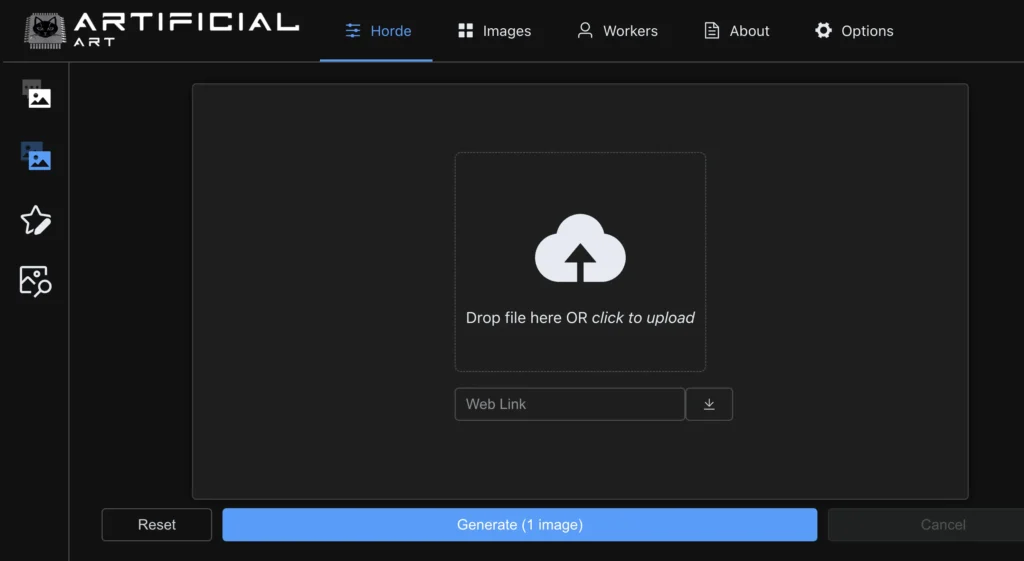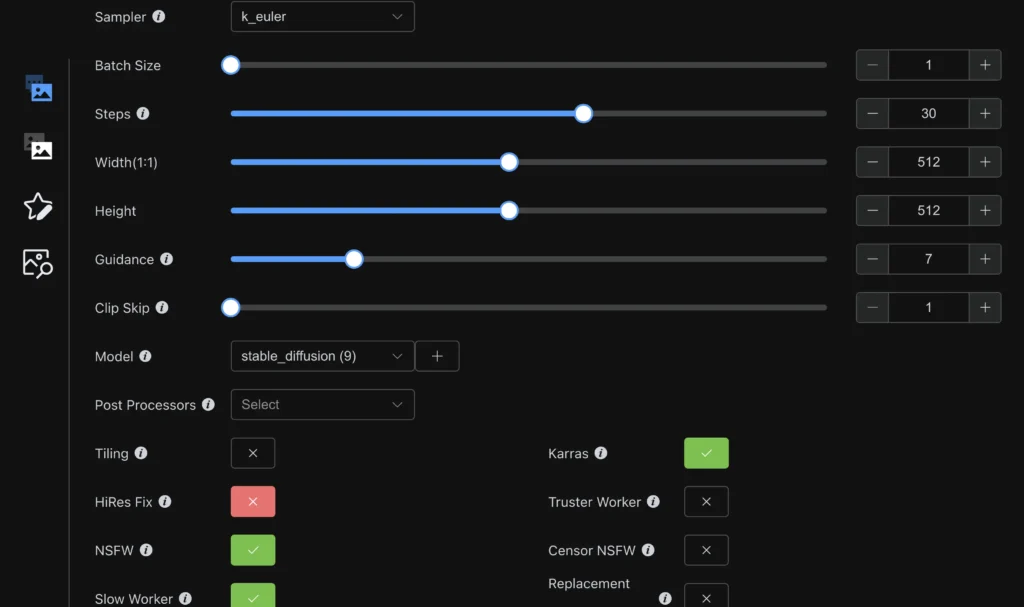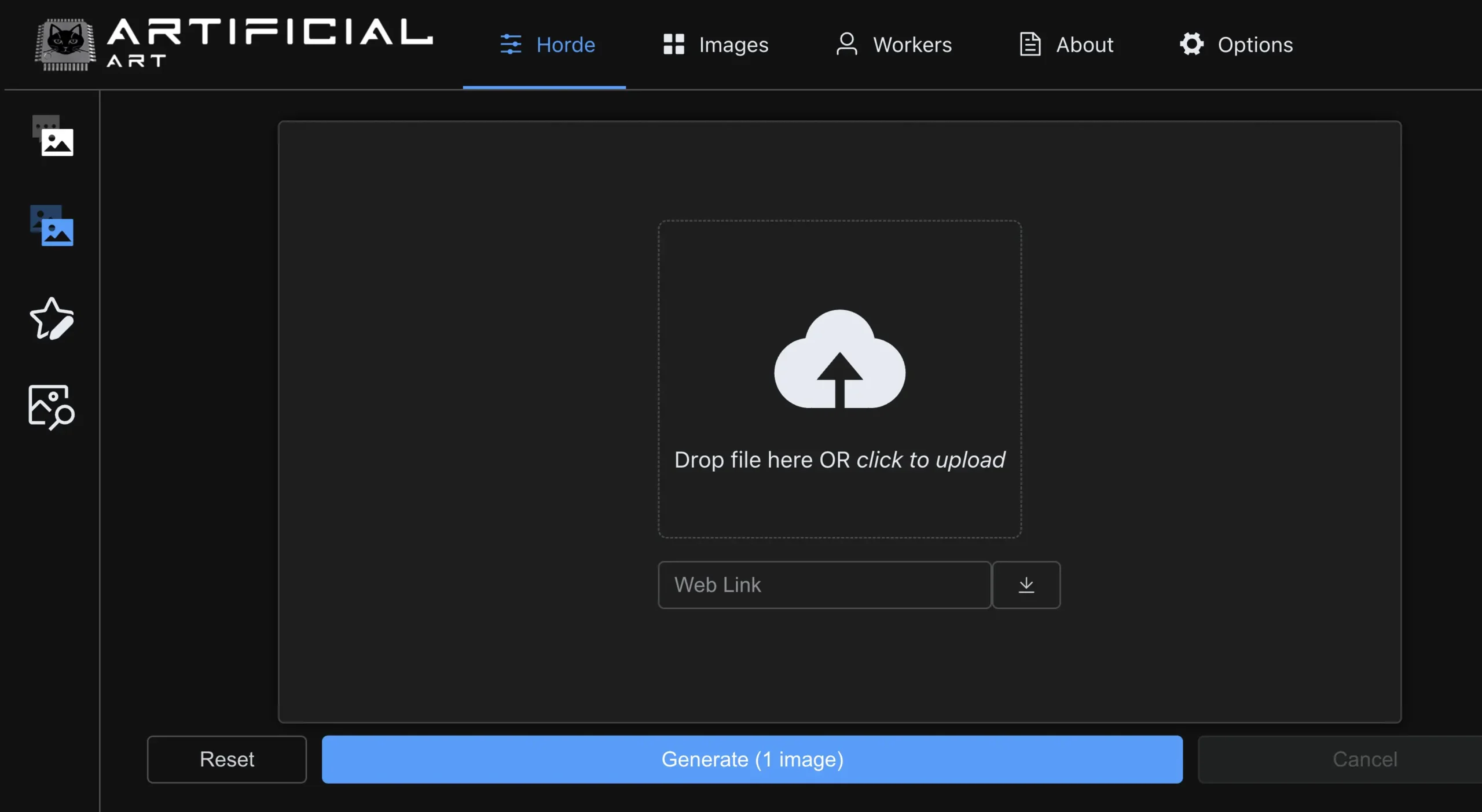What is Artificial Art AI?
Artificial Art refers to artwork created using artificial intelligence tools and algorithms, often using machine learning models to generate, modify, or enhance images. These tools can produce a wide range of artistic styles and are equipped with features like tiling, filtering, and content customization options. They may support both safe and explicit (NSFW) content.

How to use Artificial Art?
Step 1: Visit the official website at https://artificial-art.eu/
Step 2: Create an account or log in if you already have one.
Step 3: Choose the type of image you want to generate based on available models.
Step 4: Adjust settings such as tiling, filtering, and any specific preferences for the image.
Step 5: Input any text prompts or parameters for the AI to work with.

Step 6: Start the image generation process by clicking on the appropriate button.
Step 7: Review the generated images and select one or more that you like.
Step 8: Download or save the images to your device.
Step 9: If necessary, use the reset feature to create new images with different settings.
Step 10: Explore additional features to enhance or refine your images further if desired.
Use Cases of Artificial Art:
1. Produce personalized artwork for home decor.
2. Generate eye-catching marketing materials for advertising.
3. Create unique illustrations for book covers.
4. Design custom merchandise such as T-shirts and posters.
5. Generate visuals for video game environments and characters.
6. Craft concept art for films and animations.
Artificial Art Key Features:
Specialized Image Models – Utilizes advanced algorithms tailored for generating different types of images, catering to diverse artistic needs.
Tiling Feature – Enables seamless repetition of generated images, ideal for creating patterns and textures suitable for various applications.
Content Support – Accommodates both safe and NSFW content, expanding creative possibilities for artists and designers.
Filtering Options – Offers customizable filters to enhance images, allowing users to adjust styles and aesthetics to match their vision.
Reset Functionality – Provides an easy way to revert to the original generated image, facilitating experimentation without the risk of losing quality work.
Fine-Tuning Controls – Empowers users to make precise adjustments to generated images, ensuring the final output aligns perfectly with their expectations.
High-Resolution Output – Produces images in high resolution, ensuring quality and clarity for professional use or large-scale prints.
Pros and Cons:
Pros:
✓ Innovative expression
✓ Accessible creativity
✓ Rapid production
✓ Diverse styles
✓ Cost-effective
Cons:
x Lacks emotion
x Limited originality
x Ethical concerns
x Quality inconsistency
Artificial Art Pricing:
Artificial art pricing varies significantly based on factors such as the complexity of the artwork, the artist’s reputation, the medium used, and the uniqueness of the pieces. Digital art generated by AI can range from free to thousands of dollars depending on the platform and exclusivity of the artwork.
For example, generative art platforms may charge a subscription fee for users to create and print their designs, while established artists who use AI as a tool may offer limited edition or one-of-a-kind pieces at higher price points.
Related FAQs:
Q: What is Artificial Art?
A: Artificial Art refers to images created using AI algorithms and models, often resembling traditional art forms but generated through technology.
Q: What types of images can be generated?
A: The AI tool supports various types of images, including those that are safe for work and NSFW content, allowing for a diverse range of artistic expressions.
Q: Can I customize the generated images?
A: Yes, the tool includes features for tiling, filtering, and resetting, enabling users to fine-tune and modify the generated images to their preference.
Q: Is there a specific genre or style for the art created?
A: The AI tool utilizes specialized models for different genres and styles, allowing for a wide variety of artistic outputs depending on user input.
Q: How does the AI ensure image quality?
A: The AI employs advanced algorithms that enhance image quality and ensure that generated outputs meet user expectations in terms of clarity and artistic detail.
